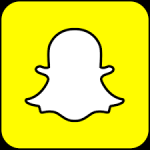 Digital and social media are transforming how government institutions, political campaigns and trade associations are communicating and marketing to their key audiences.
Digital and social media are transforming how government institutions, political campaigns and trade associations are communicating and marketing to their key audiences.
Below is a roundup of key stories in digital and public affairs for this week:
Content, Digital and Social Media
Social Media Today reports that Facebook is testing discussion topics among Facebook groups as a way to promote greater engagement. The new discussion prompts separate out topics from within the group chat, making it easier to see trending conversations and areas of interest. The new feature follows Facebook’s testing of Facebook group member application questions, which will help group admins better filter and screen their audience.
The New York Times reports how Snapchat issued new publishing guidelines for media outlets on its Discover channel. The new rules restrict publishers from posting questionable or explicit pictures that do not have news or editorial value. Snapchat also clarified guidelines that prevent publishers from including reports or links to outside websites that could be considered fake news, saying that all content must be fact-checked and accurate. The new guidelines come ahead of an initial public offering expected this spring by Snapchat’s parent company, Snap.
Gov 2.0 and Public Affairs
NextGov reports on what President Trump’s C-Suite tech team may look like at the White House. While it remains unclear which of the Obama administration’s tech-themed C-suite appointee positions will be replaced, the Trump Administration did announce the appointment of Gerritt Lansing, former chief digital officer at the Republican National Committee, to the role of Chief Digital Officer at the White House.
The Hill reports on President Trump banning EPA employees from posting social media updates as part of restrictions put in place during a policy review. A similar social media ban was put in place for employees of the United States Department of Agriculture and the National Park Service. In response to the order, some administrators of the National Park Service set up an alternative twitter account @AltNatParkSer that is “Not Taxpayer Subsided” and vowed to tweet “facts” regarding climate change. Official verified twitter accounts for the Badlands National Park and the Golden Gate National Park respectively continued to tweet climate change policy information after the ban.
Associations Now reports that while associations are aggressively planning for the recruitment of millennial members, they need to start thinking about Generation Z, which will enter into the workforce for the 1st time this year. Born on or after 1995, Generation Z has unique digital consumption habits that are different from Millennials, and love Snapchat.
Campaigns and Elections
The Knight Foundation presented a report on how the major chat apps such as Snapchat, Facebook Messenger and Viber promoted civic engagement in the 2016 Election. While the 2016 Election was the first time that the major chat platforms collectively attempted to register voters and promote election coverage, Snapchat was the most active platform; encouraging users and politicians to use the platform for sharing ideas and political conversation. Led by Head of News Peter Hamby (formerly of CNN), the platform also offered extensive election coverage.
These are some of the reads that matter to us for the week in digital and public affairs. What do you think? What are your favorite stories? We’d love to hear from you!